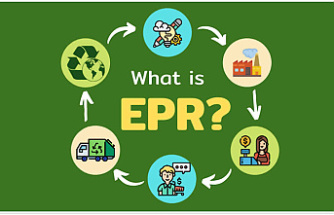Green electricity was a subsidy business for years. The state guaranteed producers a higher price than they could earn on the electricity exchange - paid from the EEG surcharge. Now the situation has reversed. Billions are piling up on the compensation account. The industry association wants to return the money to households.
While citizens' accounts are emptying due to rapidly rising gas and electricity prices, another is filling up quietly and secretly: 17 billion euros have accumulated in an account for the promotion of renewable energies.
The account, which belongs to the operators of the electricity transmission grids, was fed by a surcharge on the electricity price introduced in 2000. The idea of the so-called EEG surcharge was that households pay a little more for electricity and this money is used to promote the expansion of solar and wind systems. The much-discussed surcharge had been significantly reduced in recent years and was most recently 3.72 cents per kilowatt hour per household.
Since July it has been completely abolished. The government wanted to relieve the citizens in view of the sharp rise in energy prices. She has reserved more than six billion euros in the budget to step in for the missing amounts in the second half of the year. But probably not a cent will be needed, because the high electricity prices make the green electricity subsidy unnecessary. Even more: Although nothing was paid in, the account swelled by almost another billion euros in July. As the?
Paradoxically, the reason is essentially the same as the current burden on electricity customers. The operators of wind or solar systems receive a fixed purchase fee for their electricity, usually guaranteed by the state for a period of 20 years. In the past, this remuneration was practically always higher than the price that could be achieved with the electricity on the exchange. The deficit was then offset by the surcharge paid by electricity customers.
As a result of the Ukraine war and in the wake of the drastically increased electricity exchange prices, things are now the other way around: Green electricity can be sold for much more money than the operators get through their guaranteed purchase price. The deficit has turned into a surplus, which allows the account to swell. "The EEG surcharge account is currently growing. As long as the prices per megawatt hour are above around 170 euros, it will probably stay that way," says Simon Müller, director of the think tank Agora-Energiewende. Currently, the price on the electricity exchange is even over 600 euros.
So what to do with the money? "One possibility would be to return the money to the electricity consumers," suggests Müller. This is exactly what the German Renewable Energy Federation (BEE) demands: "The 17 billion euros should also be returned to end customers since they have been paid as a surcharge in the past," says BEE boss Simone Peter Reuters. "We propose a one-off payment to all households that are subject to the levy."
Thanks to renewable energies, 42 million households that were suffering from the price crisis of fossil fuels could be relieved by around 400 euros each. The 6.6 billion euros planned by the federal government for the second half of the year, but probably not used, could be invested in further relief, for example in energy-related renovation, demands Agora director Müller. He also points out that another 35 billion euros are earmarked for the levy in the climate and transformation fund for the years 2023 to 2026.
At the moment, however, systems for renewable energies are financed entirely through the proceeds on the electricity market and this will probably not change significantly in the future either. "The long-term contracts for electricity indicate that high prices are also expected in 2023 and 2024." For customers, the prospect of electricity that will remain expensive is bad news. The federal government can use the planned money for the subsidy for other things. "This creates scope for climate investments and electricity price relief," says Müller.
The money in the account is only used if electricity prices plummet. However, that would also be a sign of an easing of the Ukraine crisis and would relieve everyone.












